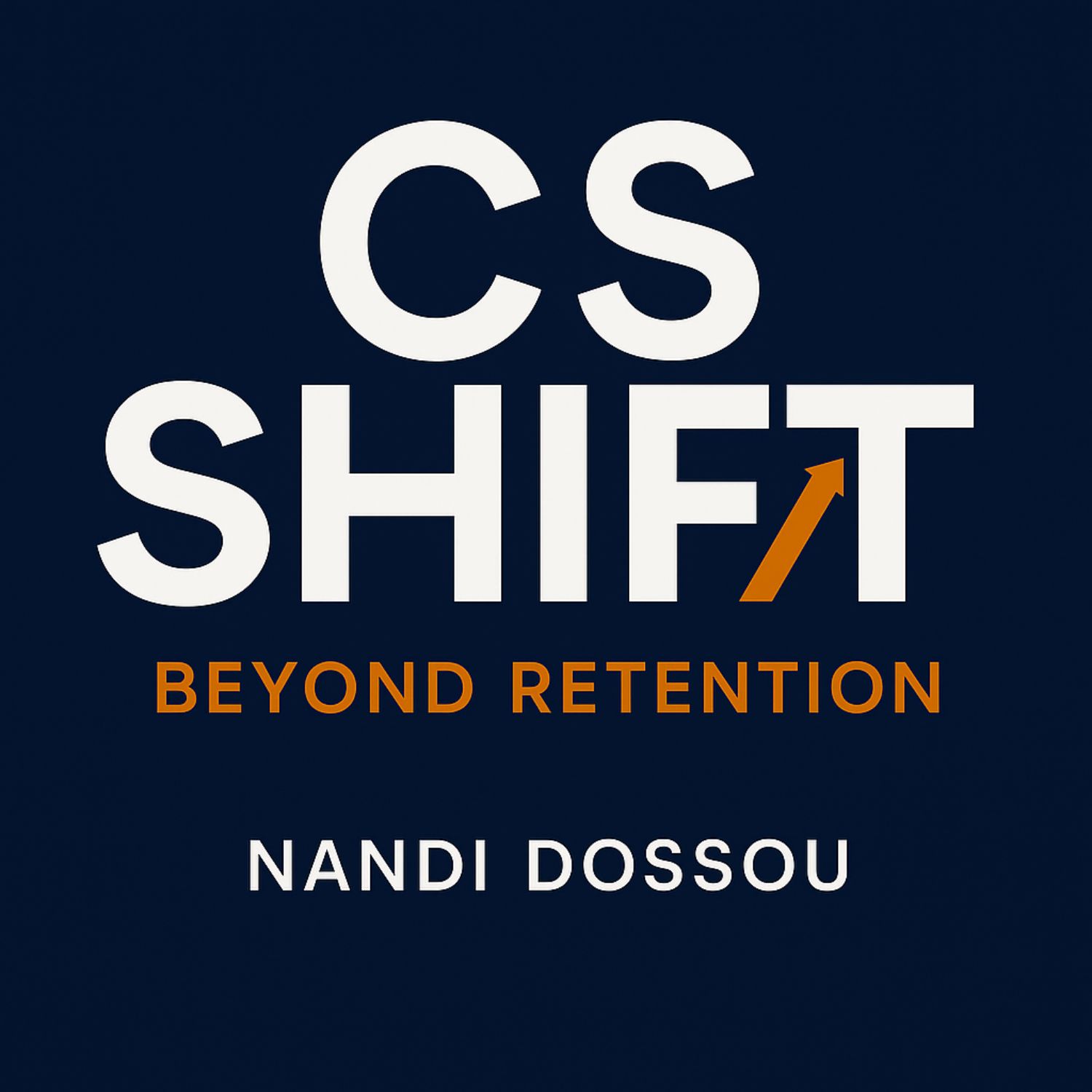Identifying AI Opportunities in Customer Success : The Process Audit
In this new season of CS Shift, I delve into the transformative potential of artificial intelligence in customer success strategies.
The episode serves as the inaugural session of a four-part series entitled the AI Readiness Audit, where I outline a framework designed to critically evaluate the processes that underpin customer success.
In 12 minutes, you'll get:
- A framework to map every customer touchpoint and identify automation opportunities
- The health monitoring red flags that indicate AI-ready problems
- A Process Audit Scorecard that quantifies your readiness
- Real examples from teams who found 6-figure opportunities in their current workflows
This isn't about identifying what's broken. It's about understanding your starting point so you can chart the most effective path to AI transformation.
Transcript
Welcome to CS Shift, the podcast that goes beyond retention with strategies for customer success leaders navigating the new era.
Speaker A:Let's dive into today's episode welcome to CS Shift, the podcast that goes beyond retention with strategies for customer success leaders navigating the new era.
Speaker A:I'm your host Nandi Dursu.
Speaker A:I'm very happy to start season two of CS Shift.
Speaker A:Today.
Speaker A:I am launching a special four part series called the AI Readiness Audit.
Speaker A:Over the next four episodes I will give you a comprehensive audit framework to assess your current customer success processes, data, strategy and results.
Speaker A:And today we will start with the foundation and the foundation your processes.
Speaker A:So whether you are exploring AI for the first time or you have already started implementing some, you know, AI strategies, I do believe that this series will give you the clarity you need to make smart decisions about where to start and what to prioritize.
Speaker A:Let's start with your processes because this is where AI opportunities hide in plain sight.
Speaker A:I want you to think about your current customer success workflows.
Speaker A:Not what is documented in your playbooks, but what actually happens day to day.
Speaker A:Step 1 Map your customer journey Touch points I want you to list every interaction your team has with customers from onboarding to renewal and be specific.
Speaker A:Welcome calls and kickoff meetings, regular check ins and business reviews support escalations and issue resolution, expansion conversations and renewal discussions, training sessions and product updates.
Speaker A:For each touch point, ask yourself how do we currently identify when this interaction is needed?
Speaker A:What data do we use to prepare for it?
Speaker A:How do we measure its effectiveness?
Speaker A:What manual work is involved?
Speaker A:Let's be real.
Speaker A:Even myself in my career, how many times you know, I realized that we were spending four hours per week to manually prepare for quarterly business reviews.
Speaker A:And when we look at it, it means 200 hours and more per year per CSM, which means that AI can automate that.
Speaker A:Step 2 Analyze your current health monitoring how do you currently assess customer health?
Speaker A:Most teams have some combination of usage metrics and engagement scores, Support ticket volume and sentiment, product adoption milestones, relationship strength indicators and again, here are some critical questions you might ask yourself.
Speaker A:How often are you updating these help scores?
Speaker A:How many data sources are you manually combining?
Speaker A:How accurate are your current predictions?
Speaker A:How much time does health score maintenance take?
Speaker A:And here are some red flags.
Speaker A:If your health score are updated monthly or less frequently, there are some AI opportunities for you.
Speaker A:If your CSMs are spending more than two hours per week on data giving AI opportunity for you frequent surprises, customers churning and actually they were looking very healthy.
Speaker A:And if you see inconsistent scoring across different CSMs AI opportunity.
Speaker A:There step number three, examine your escalation and expansion processes.
Speaker A:When do you currently intervene with at risk customers?
Speaker A:How do you identify expansion opportunities?
Speaker A:You know, sometimes we might realize that we are averaging 18 days from risk identification to meaningful innovation.
Speaker A:And by the time we act, 40% of at risk accounts are already mentally checked out.
Speaker A:And as a leader, I'm sure your team also face some common manual bottlenecks like manually reviewing usage data to support opportunities, creating customer reports for important conversations, tracking readiness across large portfolios, coordinating between CS and sales.
Speaker A:Now, now that you have reviewed all these processes and you know, look at some issues you and your team are currently facing, here is your process audit scorecard.
Speaker A:Rate each area from 1 to 5.
Speaker A:Web5 is highly automated, data driven and efficient Customer journey management Help score accuracy and timeliness, Risk identification and response expansion, opportunity identification, data covering and reporting.
Speaker A:If for each area you are scoring below three, you have significant AI opportunities.
Speaker A:Now of course you know above free you are well positioned, but you could benefit from optimization.
Speaker A:The key insight here is that every manual process is a potential AI enhancement.
Speaker A:Every delay response is a predictive analytics opportunity and every data gathering task is automation waiting to happen.
Speaker A:So next week we're going to dive into your data and deliverables.
Speaker A:Because AI is only as good as the information you feed it.
Speaker A:So what's your homework?
Speaker A:Well, complete this process audit before our next episode.
Speaker A:Map your touchpoints, assess your health monitoring and calculate your scorecard.
Speaker A:You will need these insights for what's coming.
Speaker A:Thank you so much for listening.
Speaker A:This is CS Shift and I'm Nandi Dosso.
Speaker A:Thank you for listening to this show.
Speaker A:Remember, the new mandate for customer success is driving growth.
Speaker A:And growth does not happen in isolation.
Speaker A:It's driven by strategic and operational leadership.
Speaker A:Subscribe and share this episode with another CS leader ready to shift their strategy.
Speaker A:I'm Nendidosu and this is CS Shift.

